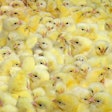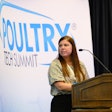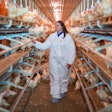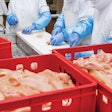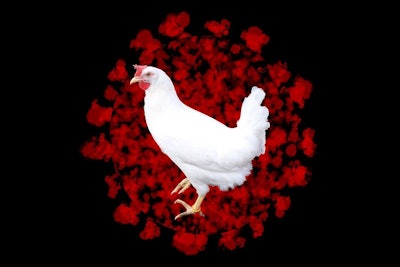
Is the poultry industry now in a portal to a different world? It may well be according to Paul Aho, president of consultancy Poultry Perspective, and what lies on the other side of that portal will be a very different world to what producers know today.
The rapid pace being forced by COVID-19 means that changes that, under normal circumstances, may have taken a decade to occur, will now be complete within just a couple of years. COVID-19 is fast-forwarding the industry to 2030.
Speaking at the Virtual PoultryTech Summit, hosted by WATT Global Media, Aho noted that change is taking place at various levels, be it evolving consumer habits, revised working practices or shifting patterns of trade. The poultry industry that will emerge once the COVID-19 pandemic has been brought under more control will, in many cases, be leaner and efficient, and more secure.
Aho continued that a return to any degree of normality is likely to still be some way off and may not emerge until 2022-2023 and, even then, there will still be waves and outbreaks causing significant disruptions caused by the novel coronavirus. Looking longer term, he warned that other diseases, both human and animal, will be more common occurrences.
Transformation within and without
So how is the poultry market adapting and what might it expect one the pandemic is more under control?
Changed consumer behavior can be expected to continue. This year has seen an increase in eating in home and, to some extent, this can be expected to continue even as we enter the new normal.
According to Richard Kottmeyer, managing director of FTI Consultancy, when we do, eventually, return to a degree of normality, many restaurants will simply have disappeared, unable to weather disease control measures.
This will leave the chains and quick service restaurants, and the latter are expected to be the immediate winners due to their take out offering.
A constant and growing concern for consumers will be traceability and this will tend to favor chain restaurants. They are likely win over independents due to their scale. This not only gives them a financial advantage, their size allows them to develop and implement full food traceability programs.
At production level, there is an ever-increasing move to automation, digitalization. Just in time production practices are giving way to just in case, helping to counter the fragility of supply chains that has emerged over recent months.
To further strengthen supply chains, producers are looking to alternative suppliers, and no longer want to put all of their eggs in one basket. Production will be increasingly optimized, and headcounts will be reduced.
Osler Desouzart, COE of OD Consulting, Market Planning & Strategy, noted that the changes that were quickly implemented in the Brazilian poultry industry saved if from plant closures. Now, he continued, everyone is talking about robotics, but there remained a lot of work to do.
Changes are taking place at different rates depending on the scale and location of individual companies. Gordon Butland, director of G&S Agriconsultant Co. Ltd. noted that while large poultry companies have already embraced new technologies, it is now the second-tier companies that are the adopters. Yet, he noted, in much of the world, chicken is still produced by small- or medium-sized companies and these smaller players simply will not have the resources to implement such big changes.
While COVID is expected to cause disruption for at least another 12 months the chicken industry is expected to continue growing, even if this year is expected to see zero growth. Companies may be looking more to their home markets but global trade is still expected to absorb approximately 12% of production.
Headcounts will be reduced, automation increased and product mix may change, and, as ever consumer demands will increase, but the fast pace of change currently being witnessed in poultry production around the world, should see the poultry sector continuing to satisfy the upward demand for animal protein. Will it have reached where it was forecast to be in 2030? It may well have.
Attend the 2021 Poultry Tech Summit
Join an exclusive international gathering of industry-changing innovators, researchers, entrepreneurs, technology experts, investors and leading poultry producers at the 2021 edition of Poultry Tech Summit on October 31 - November 2 in Atlanta, Georgia. Attendees can expect the same groundbreaking innovation and insightful presentations that made the previous events well-attended with deep dialogue on new prospective solutions and developing technologies.









